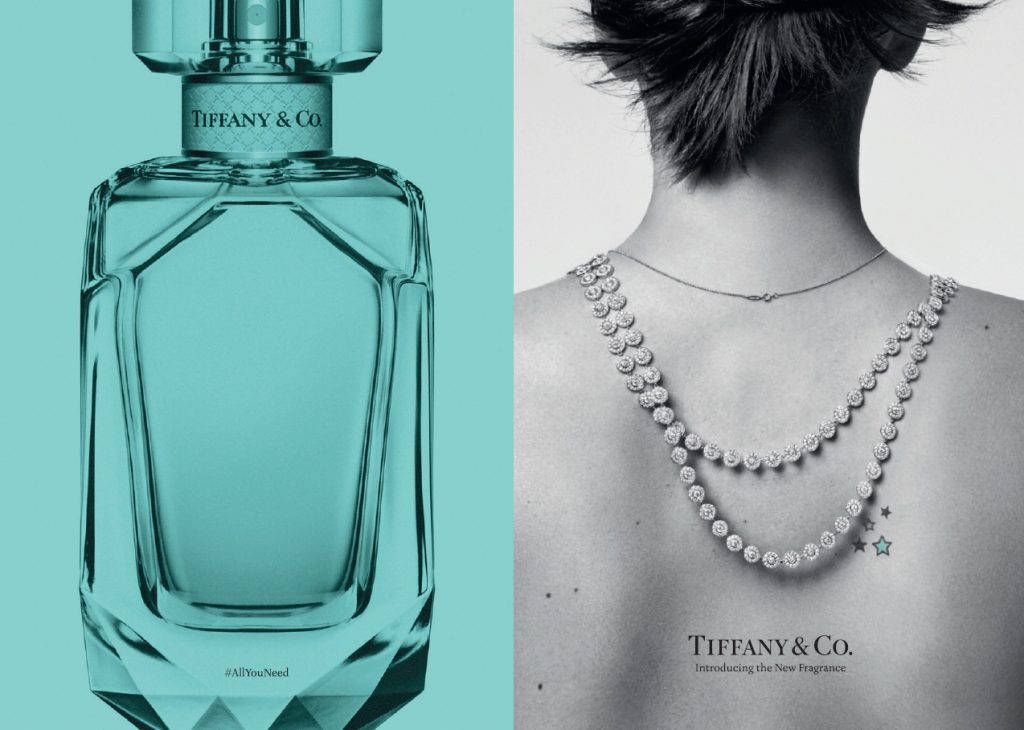Cartier is claiming in a new lawsuit that Tiffany & Co. maintains a “disturbing culture of misappropriating competitive information.” In the trade secret misappropriation and breach of contract complaint that it filed on February 28 in a New York state court, Richemont-owned Cartier claims that LVMH’s Tiffany & Co. lured former Cartier employee Megan Marino away from her role as its Assistant Manager for Jewelry Merchandising to fill a merchandising role for Tiffany’s “High Jewelry” category, which management described late last year as being “in disarray,” and got her to share confidential company information in the process.
According to its complaint, Cartier claims that on the day of her interview with Tiffany & Co.’s Vice President of North America Merchandising Katie Liappas in December 2021, Marino, who is named as a defendant in the case, forwarded “very sensitive and valuable” internal company documents to her personal email, including “pricing information and detailed product distribution strategies,” “internal presentations and guidance regarding High Jewelry, marketing and communications,” and “detailed notes of meetings inclusive of planning, real-time ‘to do’ lists and merchandising activities for 2022,” among other things that “she viewed as potentially helpful to her.”
Taken together, this information – which Cartier asserts is “only accessible by a limited number of Cartier employees [and] not known outside of Cartier” – constitutes “Cartier’s strategy for High Jewelry, including enough information to allow a sophisticated competitor to replicate key strategies and, with relative ease, to reverse engineer how Cartier allocates, merchandises, and prices its High Jewelry stock.” Given the proprietary and confidential nature of this information, Cartier claims that it amounts to a trade secret-protected asset.
Cartier v. Tiffany
After being offered the Tiffany job, Cartier alleges that Marino provided her two-week notice, allegedly alerting the company in her exit interview that she was leaving to work in an “entirely new space” and gave her former employer the “distinct impression that she was not going to be working in luxury jewelry,” and as a result, she was permitted to work through her two-week notice period until December 28, 2021.
Fast forward to early January 2022 and Cartier claims that it became aware that Marino had begun working at Tiffany, along with a number of other former Cartier employees, who had similarly jumped ship, including a former Cartier Assistant Vice President who had allegedly commenced work at Tiffany despite being subject to “a non-compete restriction [from Cartier] that prevented her from working for Tiffany for a period of six months.” (During her interview, Liappas allegedly mentioned that “several other Cartier employees had recently left to work at Tiffany […] because they were unhappy about the recent acquisition of Tiffany by LVMH, and that the two brands were “at each other’s throats.”)
While Marino was not required to observe a non-compete period between jobs, she was, however, bound by non-disclosure and non-solicitation agreements that she had previously signed as part of her role at Cartier, which Cartier claims she breached by using confidential Cartier intel, including from the aforementioned documents, to benefit Tiffany. Specifically, Cartier claims that on at least one occasion, and upon the request of Tiffany management, Marino “referenced a [Cartier] Excel spreadsheet” that she had sent to herself while still employed by Cartier that “detailed Cartier’s confidential, High Jewelry assortment information.” Based on that spreadsheet, Cartier alleges that Marino “created a new Excel document, derived entirely from Cartier’s confidential information,” including “the total number of High Jewelry pieces at various Cartier locations in the U.S.”
Beyond that, Cartier asserts that by forwarding herself confidential Cartier information and holding on to it, Marino has run afoul of the provision in her Cartier employment agreement that “immediately upon separation from employment, she would return to [Cartier] any and all documents” that contain any “Confidential Information and Trade Secrets” that she obtained in connection with her employment.
Still yet, Cartier asserts that Marino was in contact with current Cartier employees, who shared confidential information, such as a Cartier “Fall 2021 sales meeting presentation with confidential sales information for FYs 2021 and 2022,” with her, which Marino sent to her bosses at Tiffany. (Among other “particularly urgent or high priority” confidential intel that Marino’s bosses were seeking from her was information about whether Cartier was planning price increases, with Marino’s direct supervisor Liappas allegedly sending a “request that Marino reach out to someone who might know the answer.”)
Given the alleged pattern of Tiffany & Co.’s management “openly asking for highly valuable, detailed confidential information that would foster unfair competition,” Cartier claims in the newly-initiated lawsuit that Tiffany now possesses “a substantial amount of [its] confidential and trade secret information that it obtained from Marino and other former Cartier employees” as a result of their “unlawful taking of Cartier’s valuable confidential information and trade secrets.”
With the foregoing in mind, Cartier sets out claims of breach of contract and breach of loyalty against Marino individually, unfair competition and tortious interference with business relations against Tiffany, and trade secret misappropriation against both of the defendants. Cartier is seeking preliminary and permanent injunctive relief to require Tiffany and Marino to refrain from using the allegedly misappropriated information and return it to Cartier, among other things, as well as a judgment for any “compensatory damages that may be caused by [Tiffany’s] wrongful conduct.”
Making the Case
In what is unlikely to be an open-and-shut case, in order to prevail on its trade secret claim, Cartier will need to show that: (1) the information at issue is, in fact, valuable business information – and that it has kept that information secret; (2) the information is not generally known; and (3) Tiffany & Co. used the “secret” information (i.e., the confidential information that is not generally known to a company’s competitors and that provides the holder with a competitive advantage).
As for defenses, Tiffany & Co. can, at least in theory, push back on all three points, including by arguing that no such proprietary information exists; Cartier did not do enough to ensure that such information was kept secret (which should prove interesting in the age of Zoom and remote work … see Smash Franchise Partners v. Kanda Holdings for more on that); and/or it did not actually use the allegedly misappropriated information, and that any efforts that it did make in regards to its “high jewelry” strategy were the result of use of its own intel or of public information.
Should Cartier successfully establish that it maintains trade secret information that Cartier misappropriated, the case is still hardly a straightforward one, as establishing damages is often particularly challenging in cases like this, as it is relatively difficult to assign a dollar value to trade secret information, such as know-how, manufacturing processes and business practices, in order to compensate the plaintiff for the economic loss allegedly caused by the defendant’s misappropriation. As a result, courts generally have quite a bit of discretion in fashioning damages awards.
A rep for Tiffany & Co. was not immediately available for comment on the Cartier lawsuit.
Not the first high-profile trade secret misappropriation matter, Cartier’s lawsuit against Tiffany comes almost seven years after the Love Bracelet-maker filed a similar suit against a former advertising employee back in 2014, who allegedly plotted to misappropriate Cartier’s trade secrets after joining Tiffany & Co. and attempting to lure another former Cartier employee to a similar position at Tiffany & Co., as well. That case ultimately settled within a year of it being filed.
Tiffany & Co. is currently in the midst of a sweeping revamp since being brought under the LVMH umbrella in a $15.8 billion deal that was completed last year. In its full-year report for 2021, LVMH revealed that Tiffany generated consolidated revenues of 4.31 billion euros and profit from recurring operations of 778 million euros, and stated that the successful consolidation of Tiffany into the group has “reinforced LVMH’s position in high jewelry,” while further “expanding its presence in the U.S.”
The case is Cartier v. Tiffany & Co., et al., 650925/2022 (N.Y. Sup.).











